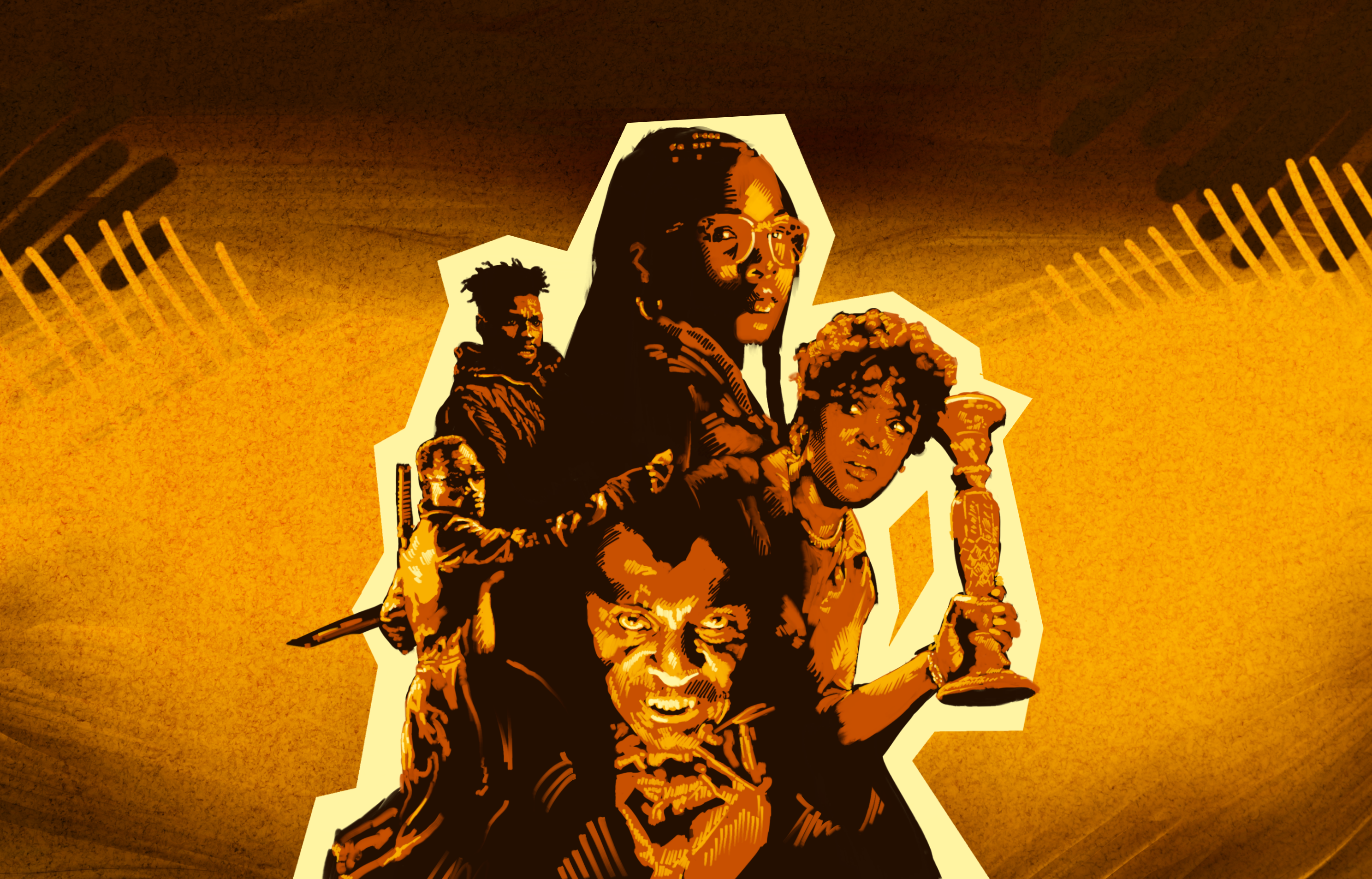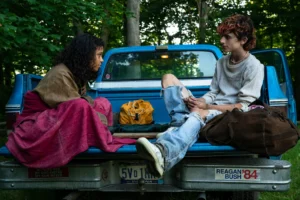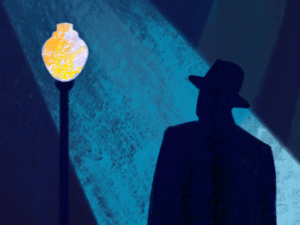October has begun! Let the horror movie fans crawl out from the underbelly of film nerds and begin their treacherous movie marathons. Whether binging all 10 Saw films or attempting to decode the Stephen King universe, the time is nigh to sink deeper and deeper into your couch until Halloween.
Unless you’re a Black horror fan; in that case, you may only have a week’s worth of viewing content that won’t kill you off in the first act or invigorate annoyance at stereotypes.
Luckily, that may change soon with Black horror’s limited catalog growing significantly over the past years.
“If [horror] movies allow themselves to look at the fears and horrors that are specific to Black communities, that’s the greatest hope,” Colva Weissenstein, program manager of American Studies and professor of American Horror in the 20th century, told the Voice. “They [filmmakers] aren’t repackaging white fear with Black casts. That is boring, not interesting.”
The reconstruction of the genre may be groundbreaking, Weissenstein said, and the public seems to agree. Indeed, Black horror is booming. Several films released this summer to overwhelmingly positive reviews and streaming success. Both The Blackening and The Angry Black Girl and Her Monster premiered in June, with They Cloned Tyrone following in July, reflecting growing public interest in the genre. Its mainstream popularity was championed by Jordan Peele’s Get Out (2017), which sparked discussions about race, fear, and the complexities of horror, facilitating the release of similar films.
Crucial to Black horror’s identity is the centering of Black cultural codes in the plot. For example, They Cloned Tyrone features a hair relaxer poisoning Black women’s brains while The Angry Black Girl and Her Monster delves into the horrors of police brutality. Both of these plots intentionally use obvious cultural symbols that become part of the terror itself to explore the complexities of Black racial identity.
In addition to physical and visual symbols, Black horror engages concepts that non-Black audiences might recognize as scary, but are significantly more so for a Black viewer. For instance, They Cloned Tyrone uses cloning as a metaphor for the disposability of Black bodies, which is terrifying in itself, but resonates more deeply with Black audiences who recognize this daily—and generational—fear. These films use a fear factor that demonstrates their dedication to Black audiences and makes them more relatable for those whose experiences are less often represented on screen.
Weissenstein said this isn’t new. She cited Blacula (1972), Tales from The Hood (1995), and Blade (1998) as important touchstones in Black horror history, though they were previously confined to a niche audience. “Now, studios are starting to pick it up and run with it,” she said.
Even within Black horror, new additions employ a wide diversity of subgenres, giving Black audiences more choices and increased representation of Black actors in Hollywood. The Blackening is considered a heavily comedic horror; They Cloned Tyrone blends comedy and sci-fi; The Angry Black Girl and Her Monster is more serious, addressing emotional vulnerability and grief. The diversity of these three examples alone demonstrates how Black filmmakers are providing a longer menu for Black horror fans.
Opinions from Black horror fans on these new additions vary. Alex Leon (CAS ’24) became interested in the genre through the American Studies and Anthropology departments’ horror movie showings, the “Car Barn Creepies.”
“I feel like there’s a lot more diversity with the types of horror movies that Black people can relate to now, which is nicer because nobody likes to watch the same movie over and over,” they said.
Leon highlighted this representation as a good thing—more Black horror movies mean more Black actors and stories.
“Now I feel like there’s more of a sense of community, maybe more of a mainstream community,” they added. “Because [Black horror] obviously was always a community, but it feels more accessible and I think that empowers me and a lot of people I know to actually go out and achieve our dreams.”
But this representation is a double-edged sword. Get Out’s success was partly due to its obvious allegory for chattel slavery—an easily understandable concept for non-Black viewers. Black students may remember the uptick of virtue signaling from white peers after its release in 2017, and the overzealous film nerds who lectured on race at parties. While the increased attention on Black horror films may be beneficial, Get Out’s success pressures filmmakers to follow in its footsteps, presenting Black cultural codes so obviously that non-Black viewers understand them, thereby boxing in Black creativity. Older Black horror films did not have these expectations to make a statement about racial complexities—simply being scary for the sake of being scary was enough.
When asked about new Black horror, Malik Clinton (CAS ’25) echoed this sentiment.
“I hate it,” he said. “There’s always a bigger message today. I’m like, ‘Oh my gosh, I’m crazy saying that.’ But Black horror to me—or at least, the Black horror I grew up on—was like, ‘Here goes the spooks.’ That’s it.”
To Clinton, contemporary films tend to over-explain the Black experience, bogging down the scare factor. The 2021 reboot of Candyman (1992) embodies this shift.
“The new Candyman versus the old Candyman, both Black, but the old Candyman had you spooked,” Clinton said. “Cause it was real, it was authentic, it kept it simple.”
Discussing Night of the Living Dead (1968), he says, “It was never like, ‘Let’s make Black horror because we need Black horror.’ It was more like, ‘Black people can do horror too. Here goes a movie on it.’”
While recent Black horror films are definitely fun to watch and diversify the genre, we should remain cognizant of Hollywood producers pandering to Black audiences for their money and diluting their creativity for white palatability. However, despite the pushback, this trend shows promise, with no signs of waning. With drive, new money, and creativity, the future of Black horror could be bright.





